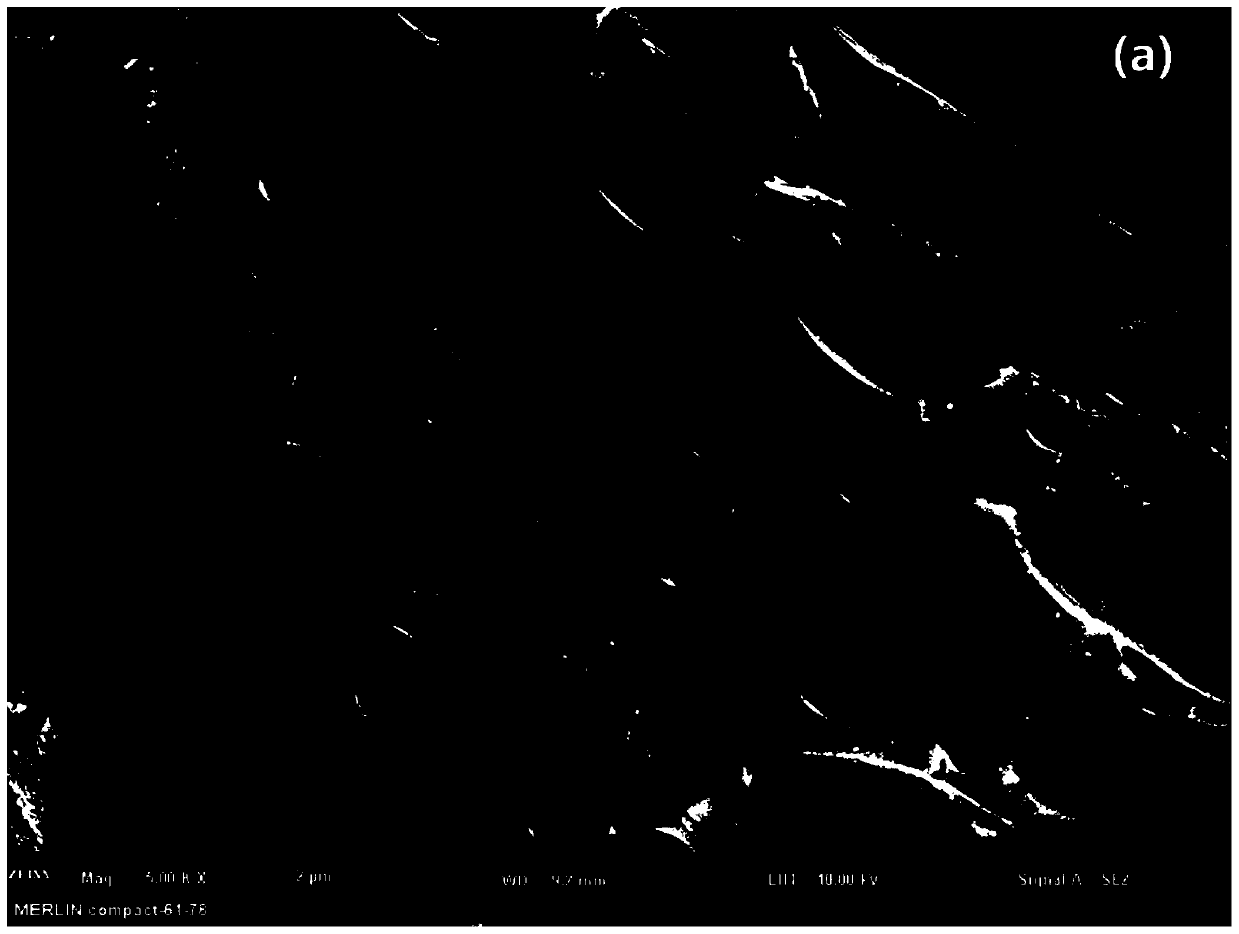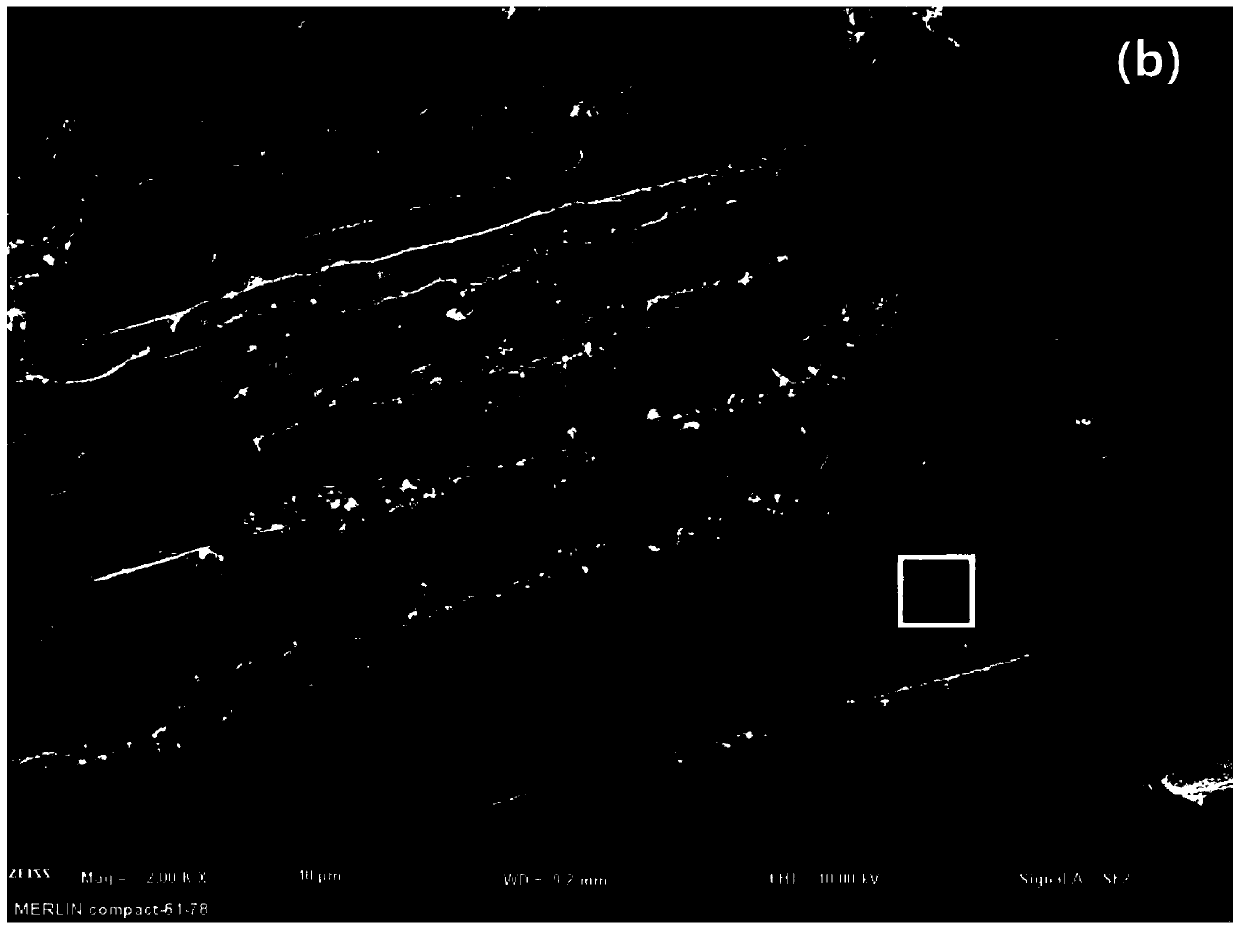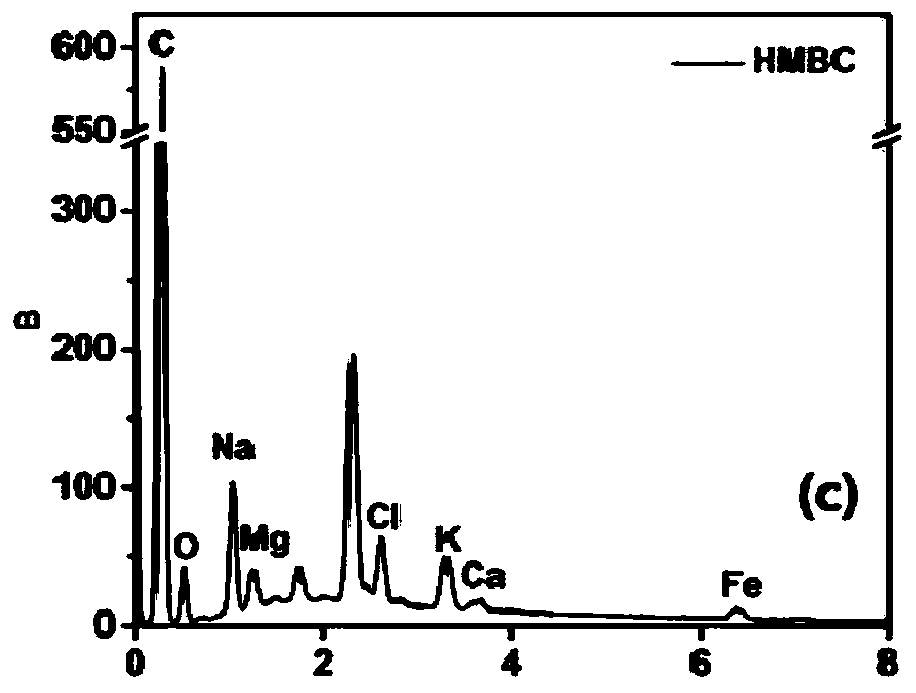Cadmium-contaminated farmland soil remediation method based on magnetic biochar
A soil remediation and biochar technology, applied in the field of cadmium-contaminated farmland soil remediation, can solve the problems of high energy consumption and cumbersome operation steps, and achieve the effect of light texture
- Summary
- Abstract
- Description
- Claims
- Application Information
AI Technical Summary
Problems solved by technology
Method used
Image
Examples
Embodiment 1
[0051] Take 50 g of corn stalks with a crushed particle size of 2-8 mm in 1 L FeSO 4 ·7H 2 Soak in O solution (50 mM), stir magnetically for 0.5 h, add 2.51 g hydroxyapatite nanoparticles to form hydroxyapatite solution (5 mM), continue magnetic stirring for 1 h to make it evenly dispersed, suction filter, and place in Dry in a blast oven at 75°C. The dried corn stalks were placed in a silicon carbide reactor, covered with a lid and placed in a muffle furnace, nitrogen was continuously passed through the muffle furnace for 5 min, pyrolyzed at 600 °C for 1 h under anaerobic conditions, and cooled to obtain magnetic biological carbon. Figure 1 is the SEM-EDS image of the prepared magnetic biochar, Figure 1(a) shows a uniform pore structure, Figure 1(b) shows the loading of hydroxyapatite and magnetic iron oxide particles, Figure 1(c) and 1(d) is the elemental and content analysis of the particles in Fig. 1(b), showing that hydroxyapatite and magnetic iron oxide are indeed loa...
Embodiment 2
[0053] To investigate the effect of different reaction times, 200 g of soil passed through a 2 mm mesh sieve was weighed and poured into a 1 L beaker. Add 400 mL of deionized water at a water-to-soil ratio of 2:1. After standing for 1 h, 6 g of magnetic biochar was added at 3% of the soil mass, stirred for 30 min, and two parallel experiments were set up. After standing for 12 h, 24 h, 36 h and 48 h respectively, the magnetic biochar with adsorbed Cd was recovered with a magnet, and the removal rate of total cadmium in the soil was measured and calculated as follows: Figure 4 shown.
[0054] The effect of different dosages, weighed 3 parts of 200 g soil that passed through a 2 mm mesh sieve, and poured it into a 1 L beaker. Add 400 mL of deionized water at a water-to-soil ratio of 2:1. After standing for 1 h, 2 g, 6 g and 10 g of HMBC were added to the beaker at 1%, 3% and 5% of the soil mass, respectively, and stirred for 30 min to set up two parallel experiments. After ...
Embodiment 3
[0056] The air-dried soil passed through a 2mm sieve was subjected to particle size classification, the Cd content in different particle sizes was measured, and the distribution of Cd content in different particle sizes was calculated. Clay particle size Figure 6 As shown, the content of Cd in clay, silt and sand are 1.75, 1.37, 0.63 mg kg, respectively –1 , it can be seen that the Cd concentration in the clay is the highest. Therefore, removing a small part of the clay can reduce the total amount of Cd in the soil.
PUM
| Property | Measurement | Unit |
|---|---|---|
| Particle size | aaaaa | aaaaa |
Abstract
Description
Claims
Application Information
 Login to View More
Login to View More - R&D
- Intellectual Property
- Life Sciences
- Materials
- Tech Scout
- Unparalleled Data Quality
- Higher Quality Content
- 60% Fewer Hallucinations
Browse by: Latest US Patents, China's latest patents, Technical Efficacy Thesaurus, Application Domain, Technology Topic, Popular Technical Reports.
© 2025 PatSnap. All rights reserved.Legal|Privacy policy|Modern Slavery Act Transparency Statement|Sitemap|About US| Contact US: help@patsnap.com



